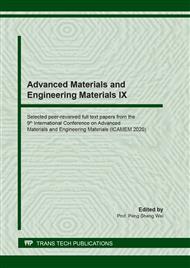p.23
p.28
p.35
p.41
p.46
p.52
p.57
p.65
p.71
Vacancy Formation Energy of Metals
Abstract:
In this work, we investigated and discussed the experimental and theoretical data of the vacancy formation energy Ev. The results of calculations in the continuum model of the solids and the model of interaction between a pair of neutral atoms, as well as the results of ab initio methods using various exchange – correlation functionals, are analyzed. It was found that the experimental and theoretical values of the vacancy formation energy have an adjusted coefficient of determination R2 close to 0.80. The relationship between the calculated vacancy formation energy and the sublimation enthalpy most closely corresponds to the relation Ev = ΔHs/3 for the results obtained on the basis of continuum model and model of interaction between a pair of atoms. The vacancy formation energy most closely correlates with the melting enthalpy ΔHm. The adjusting coefficient of determination R2 of this relation is 0.87 in comparison with 0.71 and 0.84 for the sublimation enthalpy and the evaporation enthalpy, respectively.
Info:
Periodical:
Pages:
46-51
Citation:
Online since:
September 2020
Price:
Сopyright:
© 2020 Trans Tech Publications Ltd. All Rights Reserved
Share:
Citation:


